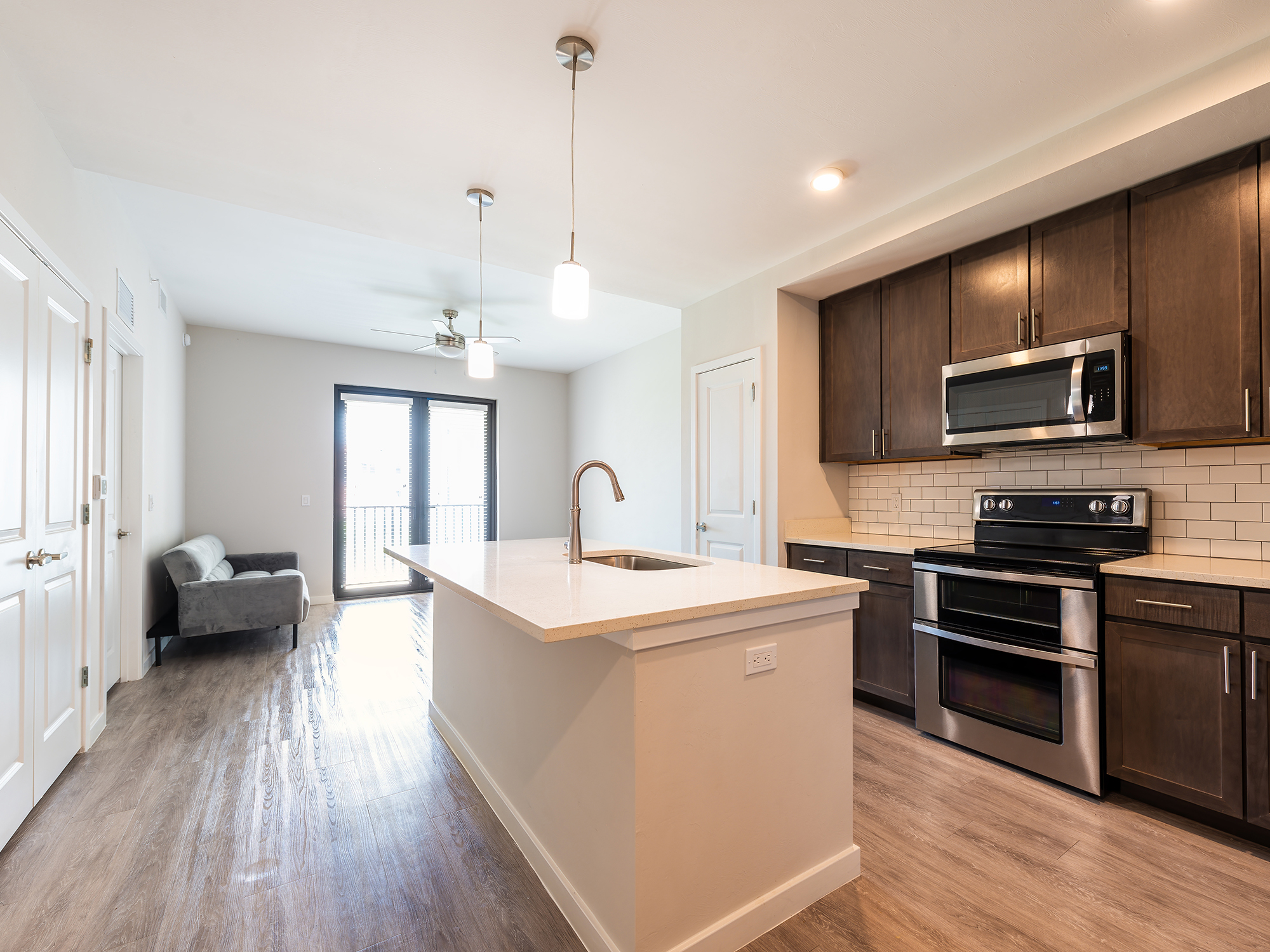

Blog
After years of inspecting multifamily housing developments across the country for compliance with regulatory requirements for accessible design and construction, our accessibility team has compiled a list of common violations that could easily have been avoided before construction even began.

In part one of this series on Fair Housing Act (FHA) compliance, we shared the most common violations we find in public and common-use areas of multifamily buildings.
In this blog post—part two—we’re focusing on the most common mistakes that our accessibility team encounters when assessing dwelling units, including door widths, kitchen clearances, and grab bar reinforcement.
It is best to solve these issues early in the design phase to save time and money on costly remediation once construction begins and to reduce the risk of exposure to future litigation.
Note that guidance provided in this blog post is specific to compliance with the design and construction requirements of the Fair Housing Act. Some requirements will vary depending on your chosen HUD-approved safe harbor for FHA compliance and may not be as stringent as other applicable criteria. Be sure to check with all applicable federal, state, and local laws and building codes to ensure full compliance.
Here are just a few examples of common violations in dwelling units:

Every door within a dwelling unit that is intended for user passage must provide sufficient clear opening width to provide access to a person using a wheelchair or other mobility aid. The minimum clear width requirement varies depending on the chosen HUD-approved FHA safe harbor (32 inches nominal or 31¾ inches).
This requirement applies to all doors intended for user passage within the unit (e.g., doors to bedrooms, bathrooms, and walk-in closets); it does not matter whether there are multiple doors providing access to a particular room.
A 2’-10” door will typically achieve compliance with the FHA-required clear width. However, be aware that many other applicable codes and standards may require a 32 inch minimum clear width. Specifying user passage doors that are 3’-0” or 2’-11”, including doors to closets deeper than 24 inches, will help to ensure that a compliant clear width is achieved.

The minimum required clearance between opposing elements in a kitchen is dependent upon whether the kitchen is a galley kitchen (40 inches) or a U-shaped kitchen (60 inches). Clearance is measured between the furthest projecting element of opposing countertops, appliances (excluding handles), and base cabinets.
Often, the range and refrigerator project further beyond the edge of the counter than is shown on the architectural plans and compromise the required minimum clearance. Be sure to check kitchen layouts against the dimensions of the specified appliances and coordinate with manufacturer’s installation requirements (e.g., air gap) to achieve compliance.
If larger appliances are selected (or substituted) after kitchen layouts have been designed, it is important that the layouts are reassessed with the updated appliance dimensions to ensure that clearances are maintained.

Switches, electrical outlets, thermostats, and other controls intended to be used by the resident must be located within accessible reach range. Noncompliance often occurs when reaching over an obstruction to access the controls is required (e.g., kitchen countertops).
Often, electrical subcontractors install controls at a consistent height to the center of the electrical box, which can result in noncompliance when not coordinated with finished flooring and areas where outlets or switches are located over counters. All controls must be operable within the specified reach ranges (i.e., 15-48 inches AFF for unobstructed reach; 46 inches maximum AFF for obstructed side reach; 44 inches maximum AFF for obstructed forward reach).
Coordinate with the specified controls to ensure that wall switches in the up position or thermostats with controls on the top of the device will not be located out of accessible reach range.
Dimensioning to the top of the electrical box for outlets, switches, and controls mounted high on the wall and the bottom of the electrical box for outlets mounted low on the wall will ensure that all operable parts are fully mounted within accessible reach range.

Grab bars are not required to be installed day one in residential dwelling units subject to the FHA as long as walls are reinforced to allow for the future installation of grab bars at water closets and bathing fixtures.
The minimum reinforced areas vary depending on the chosen HUD-approved FHA safe harbor, but all fixtures in all bathrooms in an FHA unit are required to provide reinforcing. Powder rooms are also required to provide reinforcement at the water closet where the powder room is the only toilet facility on the accessible level of a multistory unit.
Reinforcement must be continuous and uninterrupted by bathing fixture controls or other elements and must be able to structurally support at least 250 lbs of force. Where walls are not provided to accommodate the minimum reinforcement area, reinforcement for an alternate grab bar is required (e.g., a swing-up or fold-down grab bar).

Doors to dwelling unit balconies or patios are one of the most common FHA violations identified during litigation, and one of the most difficult to fix. We highly recommend avoiding the use of sliding doors in dwelling units as the majority of sliding door tracks on the market will not be able to achieve a compliant threshold with standard installation methods.
The maximum level change permitted between the interior finished floor and the exterior balcony or patio surface is dependent upon the type of exterior surface. For pervious surfaces (e.g., pedestal pavers or decking), a level change of no more than ½ inch is permitted between surfaces.
If the exterior surface is impervious (e.g., concrete or tongue and groove decking), a step down of up to 4 inches is permitted to prevent water infiltration.
The maximum permitted threshold height will vary depending on the chosen HUD-approved FHA safe harbor, but when using the FHA Guidelines or Design Manual a ¾ inch maximum threshold is permitted with a slope of no more than 1:2.
It is never too soon to think about accessible design requirements. The earlier these common problem areas are taken into consideration, the easier it will be to ensure compliance with accessibility laws and regulations once the construction phase of the project begins.
Contact us to reach SWA’s accessibility team and discuss your next project.
Peter Stratton